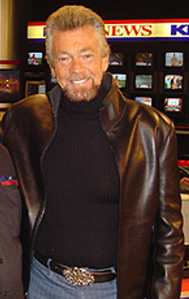by James Scott Bell
@jamesscottbell

Stephen J. Cannell
The late Stephen J. Cannell was a hugely successful TV writer and developer. Among his hit shows were The Rockford Files, The A-Team, and 21 Jump Street. Later, Cannell became a bestselling novelist, writing stand-alone thrillers and a series featuring LAPD Detective Shane Scully.
Cannell held the Three-Act structure to be foundational. He wrote:
What is the Three-Act structure? Often, when I ask a writer this question I am told that it is a beginning, middle and an end. This is not the answer. A lunch line has a beginning, middle and an end. The Three-Act structure is critical to good dramatic writing, and each act has specific story moves. Every great movie, book or play that has stood the test of time has a solid Three-Act structure. (Elizabethan Dramas were five act plays, but still had a strictly prescribed structure.) The only place where this is not the case is in a one-act play, where “slice of life” writing is the rule.
Since we are not writing novels about having lunch, what do we need from each Act? It’s not complicated.
Act One = Getting the reader bonded with a Lead. Cannell put it succinctly: “Act One is a preparation act for the viewer or reader. They are asking who is the hero. Do I like this person? Is this guy a heavy? Do I care about the relationships? What is the problem for the hero? Is the problem gripping?”
Act Two = Conflict gets progressively more difficult. Here Cannell suggests that a bit of backstory suddenly revealed can be used to create complications. E.g., the baby the woman thought was her own when she left the hospital in Act One was actually switched by a nurse. He also reminds us that both protagonist and antagonist must be in motion, making moves to try to gain the advantage, not “standing around.” At the end of Act Two, things are looking dark for the Lead.
Act Three = An ending can be upbeat or downbeat, but it needs to clearly resolve the story problem.
As we all know, that long Act Two can frequently become a slog. There are many possible reasons why this happens, which we don’t have time to go into here (I will modestly suggest that Plotman, superhero of the writers’ world, has the answers). Cannell suggests one way to get you going again:
Once we get past the complication and are into Act Two, we sometimes get stuck. “What do I do now?” “Where does this protagonist go from here?” The plotting in Act Two often starts to get linear (a writer’s expression meaning the character is following a string, knocking on doors, just getting information). This is the dullest kind of material. We get frustrated and want to quit.
Here’s a great trick: When you get to this place, go around and become the antagonist. You probably haven’t been paying much attention to him or her. Now you get in the antagonist’s head and you’re looking back at the story to date from that point of view.
“Wait a minute… Rockford went to my nightclub and asked my bartender where I lived. Who is this guy Rockford? Did anybody get his address? His license plate? I’m gonna find out where he lives! Let’s go over to his trailer and search the place.” Under his mattress maybe the heavy finds his gun (in Rockford’s case, it was usually hidden in his Oreo cookie jar). His P.I. license is on the wall. Now the heavy knows he’s being investigated by a P.I. Okay, let’s use his gun to kill our next victim. Rockford gets arrested, charged with murder. End of Act Two.
See how easy it works? The destruction of the hero’s plan. Now he’s going to the gas chamber.
Boom! (Of course in Act Three Rockford gets out of it. This is a series, after all!)
I call Cannell’s trick the “shadow story.” The shadow story is what goes on “off screen” (or “off page” if you will). I like to make shadow story notes to myself throughout he writing (I use Scrivener for this, but you can also use the Comment function in Word). Just pause every now and then and ask what the main characters not in your current scene are doing and planning. What are their motives? Secrets? Desires?
Your shadow story will give you more than enough plot material to get you through that long middle portion of your novel.
Discuss!

 We are, of course, flooded with books these days. The Forbidden City still puts out product. The indie output is a veritable tsunami that swells ever larger each day. While most of it is bad (per
We are, of course, flooded with books these days. The Forbidden City still puts out product. The indie output is a veritable tsunami that swells ever larger each day. While most of it is bad (per 
